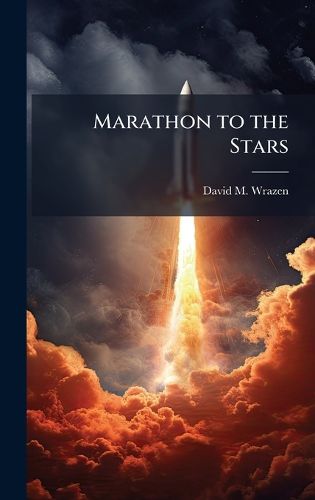Readings Newsletter
Become a Readings Member to make your shopping experience even easier.
Sign in or sign up for free!
You’re not far away from qualifying for FREE standard shipping within Australia
You’ve qualified for FREE standard shipping within Australia
The cart is loading…






The United States' ever growing reliance on space assets requires a paradigm shift in how the government invests resources to obtain high quality capabilities, and remain ahead of international peers in the global space race. This research paper answers the question, what specific technology investment strategies should the US take to increase its position among the international space powers? Using a problem-solution methodology, an optimum investment strategy is determined and then compared against the current investment approach of the US. The US currently relies heavily on direct government-led funding and development, leveraging very little of the vast commercial potential within the US and international community resulting in high costs, long schedules, and a lack of innovation. This conclusion supports the recommendation that the US must greatly increase the use of commercial assets for space launch, satellite communications, and imagery intelligence, and pursue international cooperation for space exploration.
This work has been selected by scholars as being culturally important, and is part of the knowledge base of civilization as we know it. This work was reproduced from the original artifact, and remains as true to the original work as possible. Therefore, you will see the original copyright references, library stamps (as most of these works have been housed in our most important libraries around the world), and other notations in the work.
This work is in the public domain in the United States of America, and possibly other nations. Within the United States, you may freely copy and distribute this work, as no entity (individual or corporate) has a copyright on the body of the work.
As a reproduction of a historical artifact, this work may contain missing or blurred pages, poor pictures, errant marks, etc. Scholars believe, and we concur, that this work is important enough to be preserved, reproduced, and made generally available to the public. We appreciate your support of the preservation process, and thank you for being an important part of keeping this knowledge alive and relevant.
$9.00 standard shipping within Australia
FREE standard shipping within Australia for orders over $100.00
Express & International shipping calculated at checkout
Stock availability can be subject to change without notice. We recommend calling the shop or contacting our online team to check availability of low stock items. Please see our Shopping Online page for more details.
The United States' ever growing reliance on space assets requires a paradigm shift in how the government invests resources to obtain high quality capabilities, and remain ahead of international peers in the global space race. This research paper answers the question, what specific technology investment strategies should the US take to increase its position among the international space powers? Using a problem-solution methodology, an optimum investment strategy is determined and then compared against the current investment approach of the US. The US currently relies heavily on direct government-led funding and development, leveraging very little of the vast commercial potential within the US and international community resulting in high costs, long schedules, and a lack of innovation. This conclusion supports the recommendation that the US must greatly increase the use of commercial assets for space launch, satellite communications, and imagery intelligence, and pursue international cooperation for space exploration.
This work has been selected by scholars as being culturally important, and is part of the knowledge base of civilization as we know it. This work was reproduced from the original artifact, and remains as true to the original work as possible. Therefore, you will see the original copyright references, library stamps (as most of these works have been housed in our most important libraries around the world), and other notations in the work.
This work is in the public domain in the United States of America, and possibly other nations. Within the United States, you may freely copy and distribute this work, as no entity (individual or corporate) has a copyright on the body of the work.
As a reproduction of a historical artifact, this work may contain missing or blurred pages, poor pictures, errant marks, etc. Scholars believe, and we concur, that this work is important enough to be preserved, reproduced, and made generally available to the public. We appreciate your support of the preservation process, and thank you for being an important part of keeping this knowledge alive and relevant.